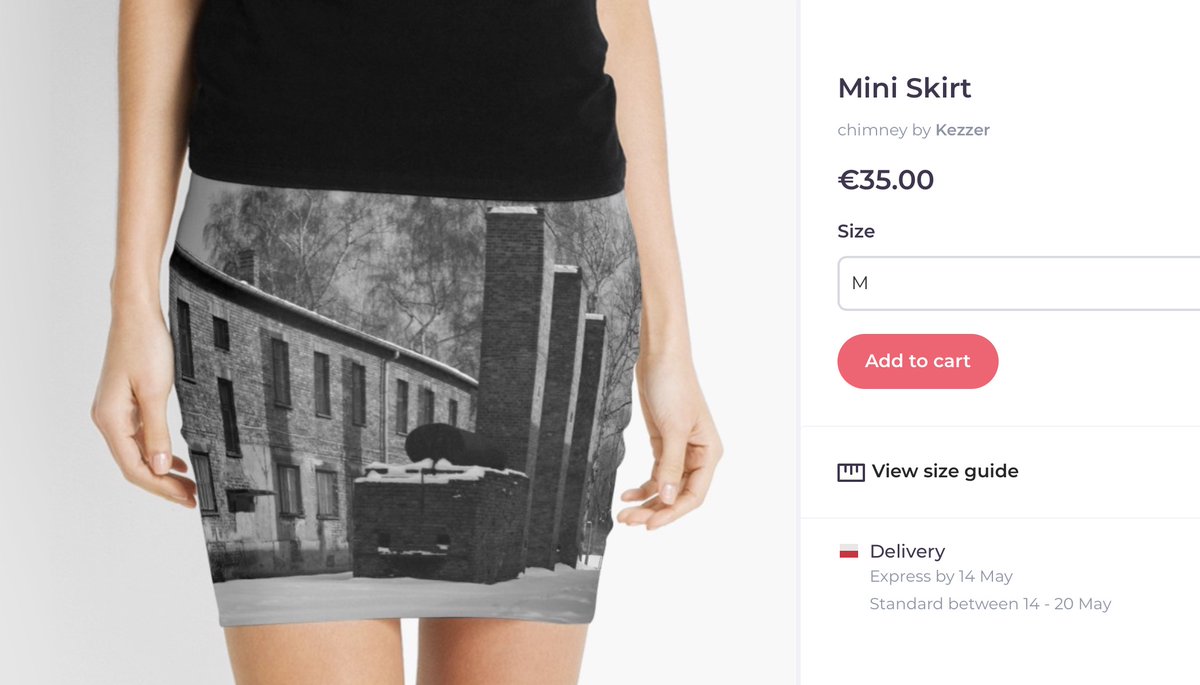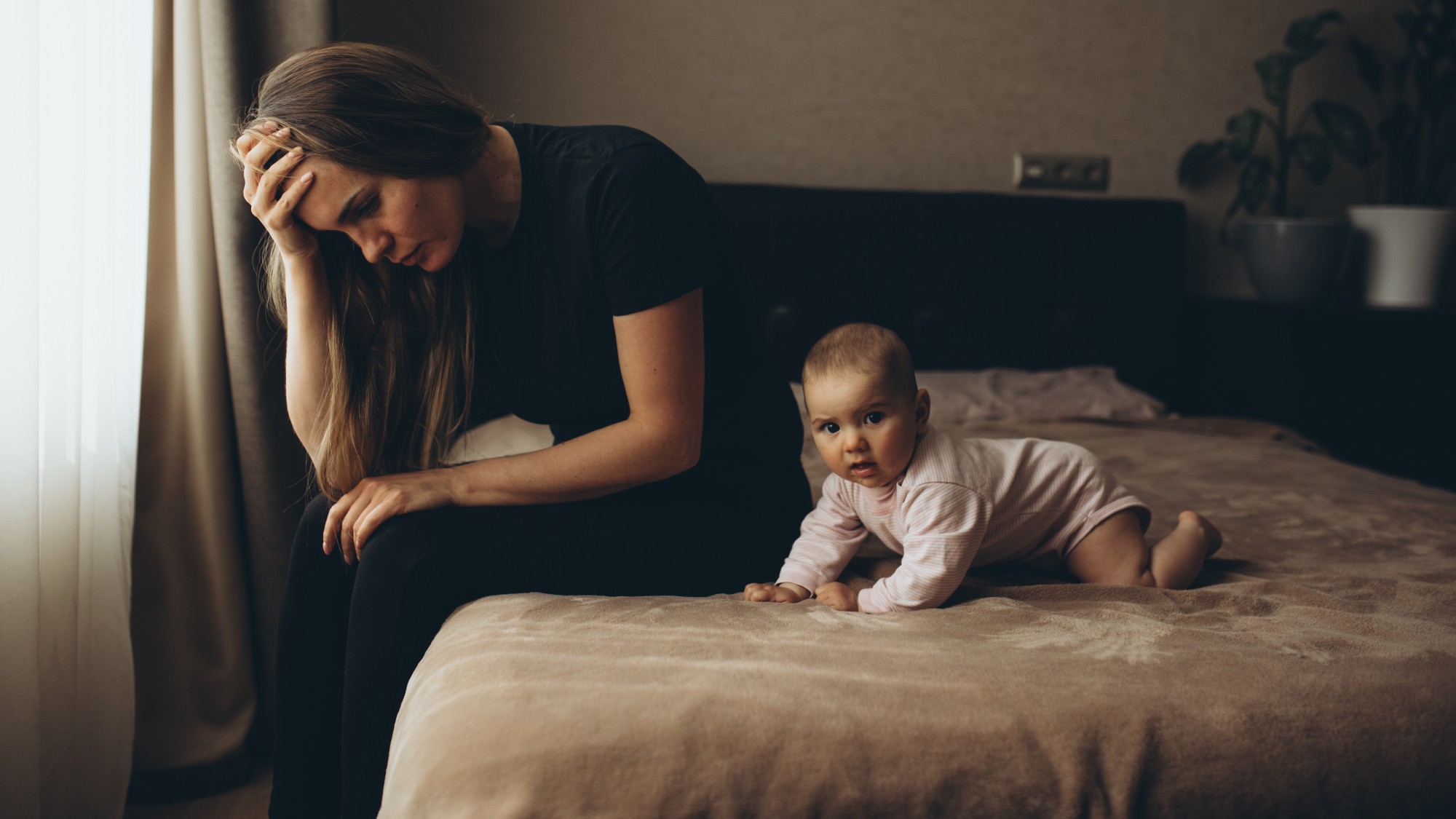Auschwitz-themed miniskirts and nine other fashion disasters
Online retailer comes under fire for selling third-party merchandise printed with image of concentration camp

An online marketplace has removed a mini-skirt and bag emblazoned with images of Auschwitz featured on its site amid outcry.
ITV reports that a user on Redbubble, where custom-made items can be sold, created a series of “disturbing and disrespectful” items printed with images of the Nazi death camp in which more than a million Jews and other ethnic minorities were murdered.
A miniskirt, cushion and tote bag were among the merchandise put up for sale on the site.
The Week
Escape your echo chamber. Get the facts behind the news, plus analysis from multiple perspectives.

Sign up for The Week's Free Newsletters
From our morning news briefing to a weekly Good News Newsletter, get the best of The Week delivered directly to your inbox.
From our morning news briefing to a weekly Good News Newsletter, get the best of The Week delivered directly to your inbox.
The items were flagged by the Auschwitz Memorial, which tweeted: “Do you really think that selling such products as pillows, mini skirts or tote bags with the images of Auschwitz – a place of enormous human tragedy where over 1.1 million people were murdered – is acceptable?”
Redbubble said it was taking “immediate action” to remove the items and any similar products.
“Thank you for bringing this to our attention. The nature of this content is not acceptable and is not in line with our Community Guidelines,” Redbubble said.
It is far from the first tasteless fashion disaster. Here are some others:
A free daily email with the biggest news stories of the day – and the best features from TheWeek.com
Geisha chic
In 2017, Vogue came under fire after dressing model Karlie Kloss as a Japanese geisha in a fashion photoshoot.
The March 2017 edition of the magazine claimed to celebrate the diversity of “the modern American woman” and features Chinese model Liu Wen on the cover.
However, the images of Kloss dressed as a Japanese woman sparked accusations of “yellowface”.
One photo shows her on the stairs of a tea house while in another, she stands next to a sumo wrestler.
The move was seen as an example of Vogue exhibiting an “egregious misunderstanding” of what diversity actually means, says the New York Magazine: “One would think that designing an entire issue around 'diversity' would have stopped this editorial before it even started. Apparently not.”
Kloss apologised for taking part in a shoot “that was not culturally sensitive” and said the images “appropriate a culture that is not my own”.
Refugee chic
Hungarian fashion photographer Norbert Baksa came under fire in 2015 for “Der Migrant”, a shoot inspired by the refugee crisis in Europe.
His pictures included one of a model in a headscarf bearing much of her chest as she was dragged away by a security guard. Another model, her shirt completely undone, appeared to be taking a selfie using a Chanel-clad mobile phone by a barbed-wire fence.
At a time when millions had been left homeless, dead and missing while attempting to flee armed conflict and persecution, critics described the pictures as “disgusting and shameful”.
Baksa’s claim that he simply intended to “draw attention” to the complexity of the problem failed to pacify his detractors and he later removed the images.
Gang rape chic
A fashion shoot in India showing a model being groped on a bus was slated for appearing to glamorise the infamous 2012 gang rape in Delhi. Critics said the images, taken by Mumbai-based photographer Raj Shetye, were reminiscent of the attack on a 23-year-old physiotherapy student, which was so brutal that she died two weeks later from internal injuries.
Four men were sentenced to death, while a fifth, a juvenile at the time of the crime, was sentenced to three years in jail.
Shetye said the shoot was “just a depiction of the situation of women in our country” and not based on the rape. However the photo-feature, called The Wrong Turn, was taken offline after widespread criticism.
North Korea chic
Elle magazine sparked outrage by including “North Korea chic” as one of its top fashion trends for autumn 2013.
The magazine found inspiration in the brutal dictatorship, but failed to impress human rights campaigners.
“Some iteration of the military trend stomps the runways every few seasons,” wrote Elle's creative director Joe Zee in an article for the magazine. “This time, it's edgier, even dangerous, with sharp buckles and clasps and take-no-prisoners tailoring.”
As an example, she pointed to a pair of designer camouflage trousers that sell for $425 – around a third of what the average North Korean earns in a year. Elle subsequently pulled the article from its website and apologised.
Suicide chic
Also in 2013, Vice magazine published a fashion shoot inspired by the suicides of famous female authors, from Sylvia Plath to Virginia Woolf. One model was pictured lying on the pavement, imitating Beat poet Elise Cowen, who died after jumping out of a window.
Another mimicked Sanmao, a Taiwanese author who hanged herself with a pair of stockings (Vice included a fashion credit for the tights).
Mental health charities slammed the shoot, while former fashion model Jenna Sauers described it as “breathtakingly tasteless”. Vice subsequently pulled the images from its website and apologised.
Hurricane chic
A 2014 February issue of Vogue featured a photoshoot inspired by Hurricane Sandy.
The spread, shot by Anne Leibovitz, was intended to be a tribute to New York's “bravest and brightest” but critics branded it “inappropriate” and in “poor taste”. Employees from the New York City Fire Department posed alongside models wearing high-priced runway designs.
Vogue contributed a vast amount of money to the Sandy relief effort, but failed to win over the critics. The Fashion Spot accused it of “treating the very people it was ostensibly celebrating as ‘heroes’ as little more than set pieces”.
Slave chic
Pakistani designer Aamna Aqeel sparked a race-row with a “Be My Slave” photo shoot, published in Diva magazine. In the spread, a white model poses in haute couture while a nearly naked black boy attends to her every need.
In some images, the child servant is seen sleeping on the bare ground next to the model or holding an umbrella over her head. In all the photos, the child looks subservient and downcast. Aqeel claimed she was trying to bring light to the issue of child labour, but critics said the spread did nothing of the sort, instead glorifying the objectification of human beings.
Homeless chic
Designer John Galliano is credited with heralding the arrival of “homeless chic” in spring 2000.
His newspaper-clad models took to the runway with empty J&B whiskey bottles, inside-out labels and tin cups dangling from their backs. Others wore strait jackets and white “madhouse make-up”.
Despite criticism from mental health and homeless campaigners, as well as a biting parody in Ben Stiller's Zoolander, the "poorgeoisie" trend continued.
Vivienne Westwood's 2010 menswear show in Milan took it a step further with make-up imitating frostbite, accessories such as shopping trolleys and rolled up mattresses, and a runway covered in cardboard boxes.
War chic
Italian Vogue was accused of sexualising and glamorising the Iraq War with a shoot in September 2007.
Set in a military camp, models wore tiny, revealing dresses and dazed expressions while being groped in the mud by groups of tattooed soldiers in combat trousers. Raquel Zimmerman and Agyness Deyn were among the models photographed in the centre of a sexually charged war zone straddling shirtless soldiers, cavorting around in mud and exposing their breasts while wearing expensive designer gowns.
“Sort of like a rape camp, girls, but you get to wear Roberto Cavalli,” wrote The Guardian.
-
 ‘Care fractures after birth’
‘Care fractures after birth’instant opinion Opinion, comment and editorials of the day
-
 Shots fired in the US-EU war over digital censorship
Shots fired in the US-EU war over digital censorshipIN THE SPOTLIGHT The Trump administration risks opening a dangerous new front in the battle of real-world consequences for online action
-
 What will the US economy look like in 2026?
What will the US economy look like in 2026?Today’s Big Question Wall Street is bullish, but uncertain
-
 How Bulgaria’s government fell amid mass protests
How Bulgaria’s government fell amid mass protestsThe Explainer The country’s prime minister resigned as part of the fallout
-
 Femicide: Italy’s newest crime
Femicide: Italy’s newest crimeThe Explainer Landmark law to criminalise murder of a woman as an ‘act of hatred’ or ‘subjugation’ but critics say Italy is still deeply patriarchal
-
 Brazil’s Bolsonaro behind bars after appeals run out
Brazil’s Bolsonaro behind bars after appeals run outSpeed Read He will serve 27 years in prison
-
 Americans traveling abroad face renewed criticism in the Trump era
Americans traveling abroad face renewed criticism in the Trump eraThe Explainer Some of Trump’s behavior has Americans being questioned
-
 Nigeria confused by Trump invasion threat
Nigeria confused by Trump invasion threatSpeed Read Trump has claimed the country is persecuting Christians
-
 Sanae Takaichi: Japan’s Iron Lady set to be the country’s first woman prime minister
Sanae Takaichi: Japan’s Iron Lady set to be the country’s first woman prime ministerIn the Spotlight Takaichi is a member of Japan’s conservative, nationalist Liberal Democratic Party
-
 Russia is ‘helping China’ prepare for an invasion of Taiwan
Russia is ‘helping China’ prepare for an invasion of TaiwanIn the Spotlight Russia is reportedly allowing China access to military training
-
 Interpol arrests hundreds in Africa-wide sextortion crackdown
Interpol arrests hundreds in Africa-wide sextortion crackdownIN THE SPOTLIGHT A series of stings disrupts major cybercrime operations as law enforcement estimates millions in losses from schemes designed to prey on lonely users